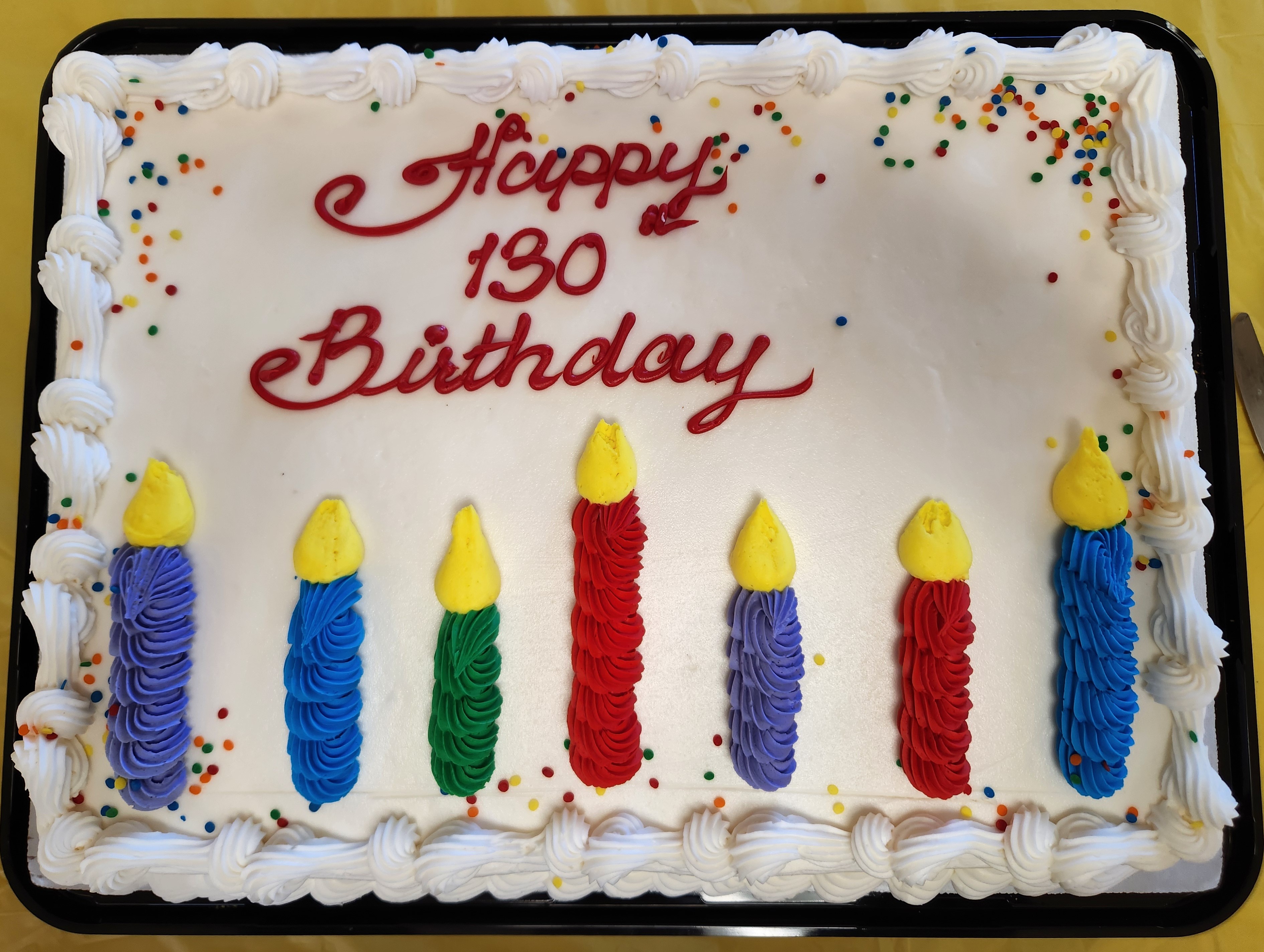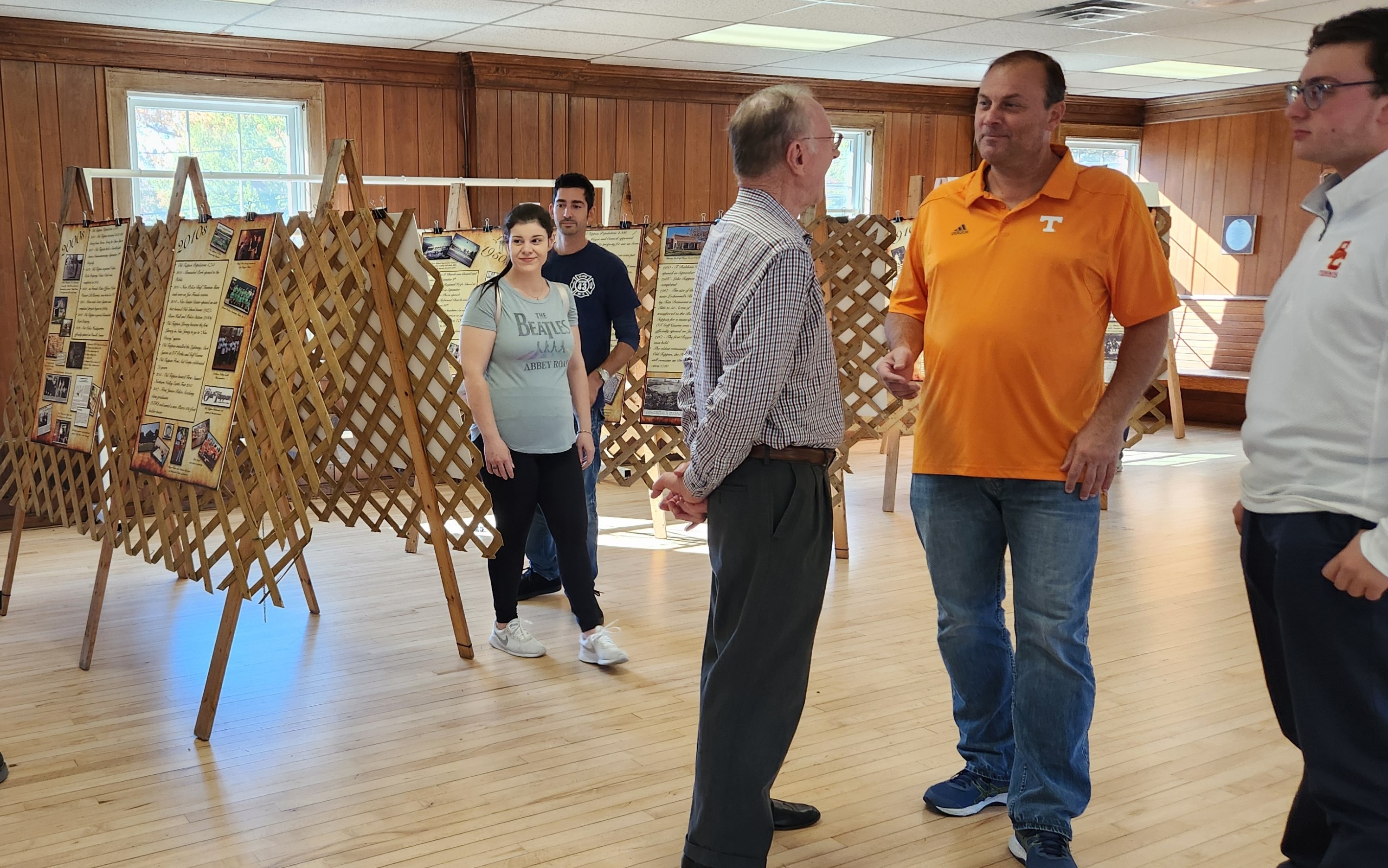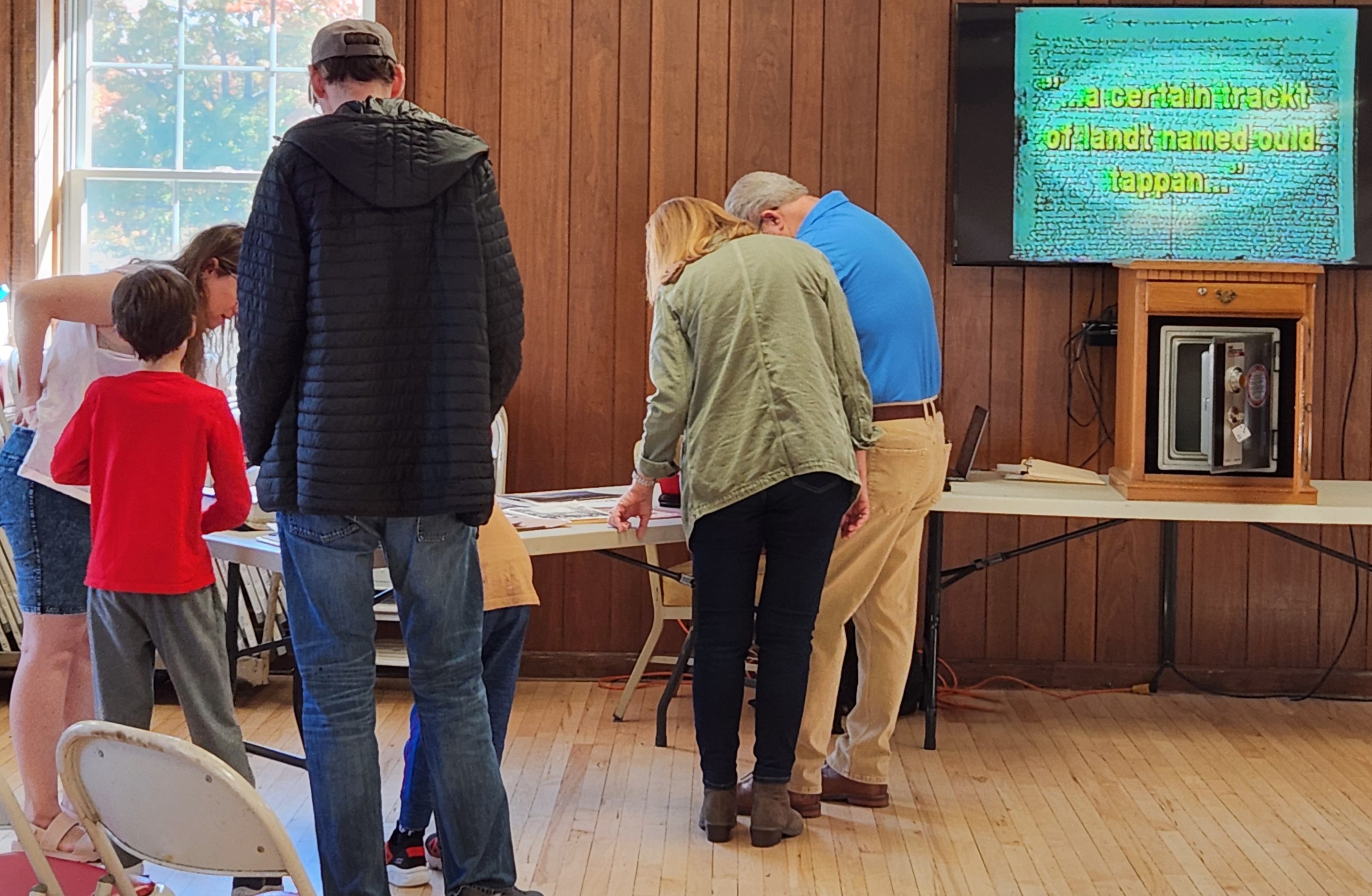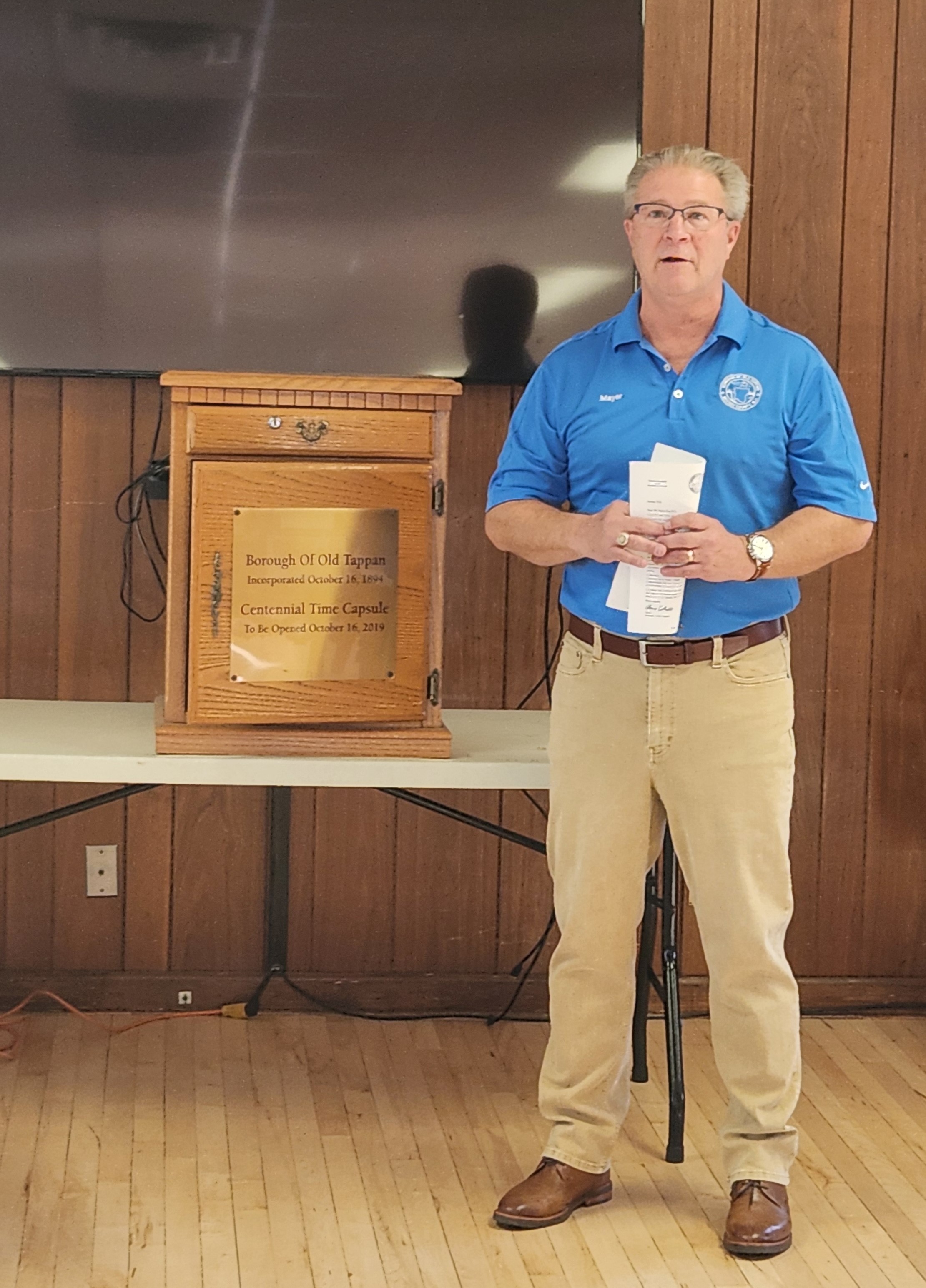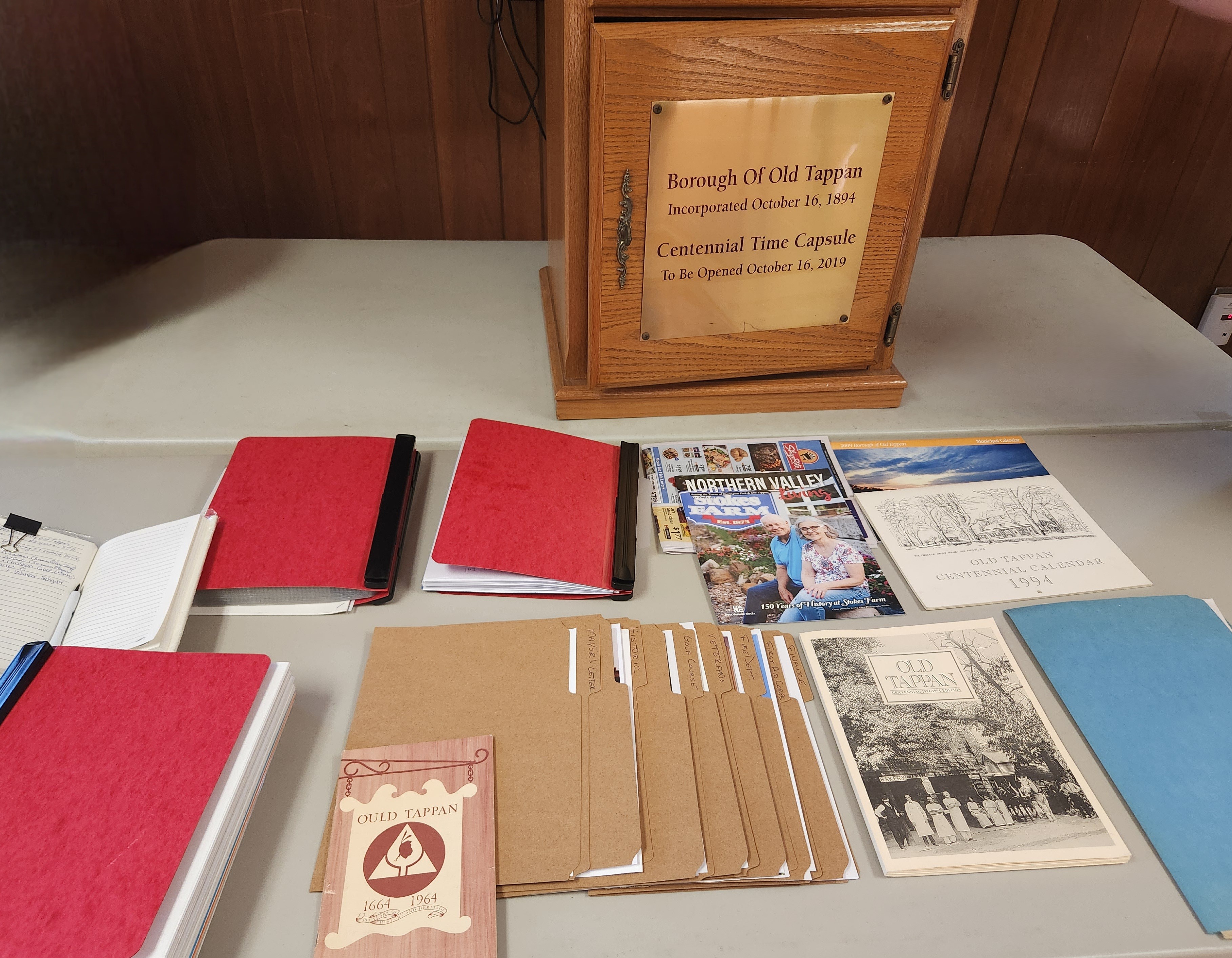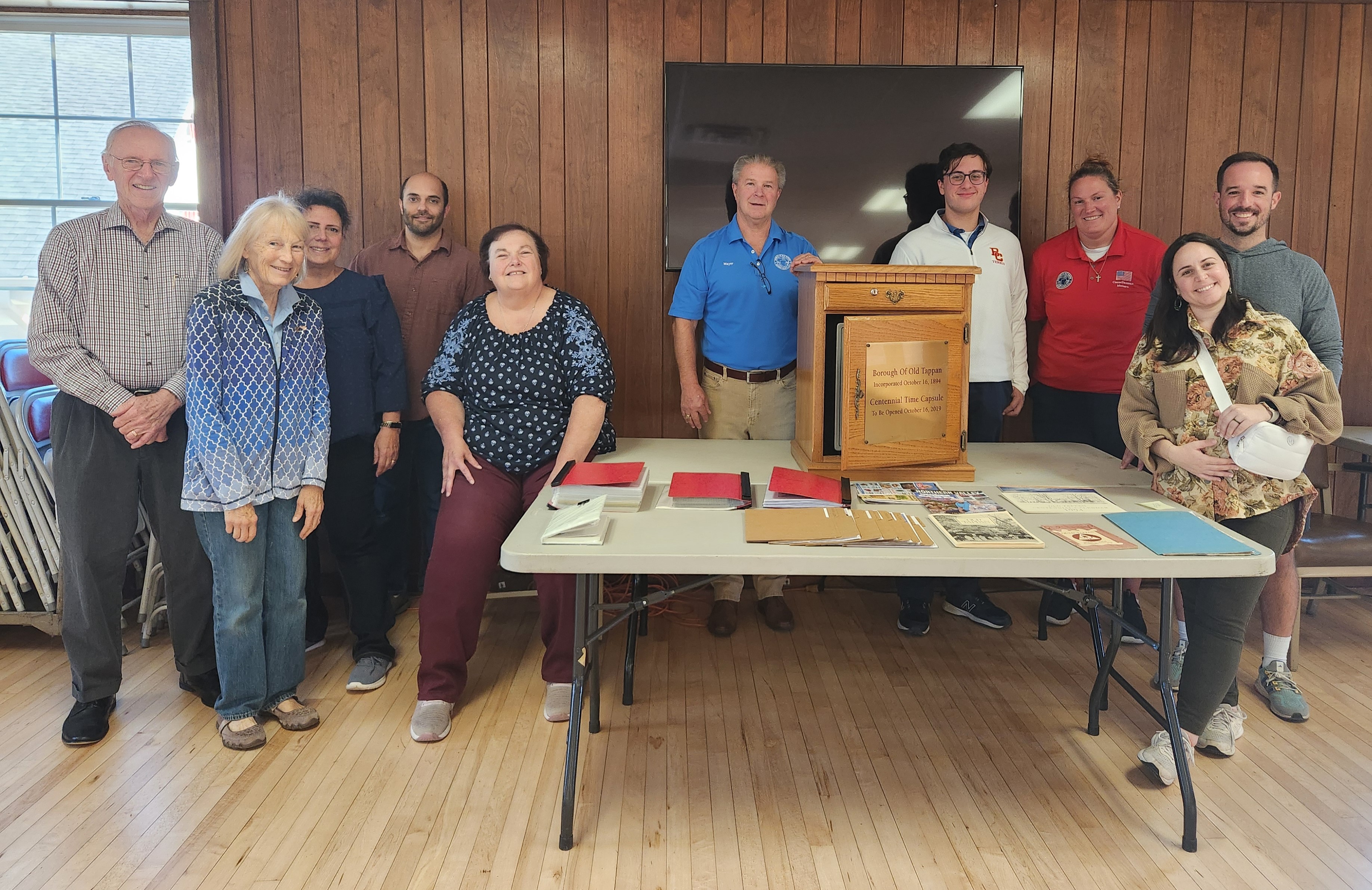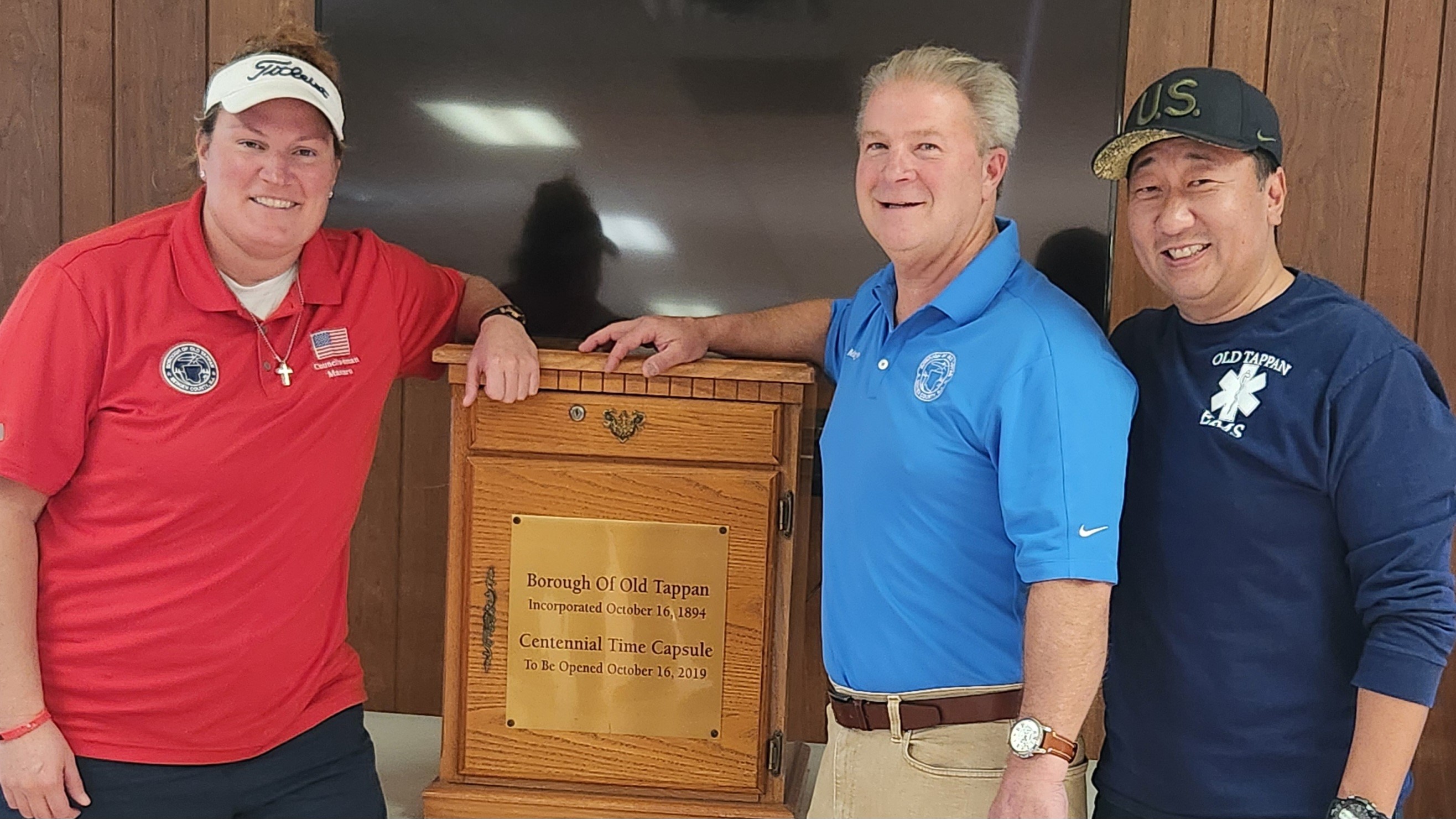Historical Committee
Committee Members
Karen Goddard, Chair
Anna Haverilla
Arantzazu Cioce
Brian Davidson
John Kramer
Kathryn Ferdinand
Matthew Morin
Sam Petrocelli
Council Liaison - Christine Massaro
Historical Pages
The History of Old Tappan
From the Hudson River it was across the salt meadow and through the narrow valley of the Tappan Creek (present day Piermont, New York) that the first inland settlement to the west was made. Land was purchased from the Lenni Lenape Indians on March 17, 1682.
Five years later, in 1687, legal title to the land known as the Tappan patent, was granted by Governor Thomas Dongan of New York to thirteen Dutchmen and three free Negroes. The Tappan patent is believed to be the only land grant of its kind in the country to include both blacks and whites on an equal basis. They were all prosperous farmers from the settlement called the Bouweriewhich grew up around Peter Stuyvestant's farm in what had been New Amsterdam. As their farms became crowded by the late 17th Century, they came together to purchase new unsettled lands in the wilderness.
The land they bought is described as "…a Cartaine trackt of Landt named ould tappan as ye same is bounded by trees marked by ye indians.” The ould tappan of 1682 was much larger than the Old Tappan we know today. Tappan, from the Lenni Lenape word Tuphanne (reputed to mean cold water) was the area around present day Piermont, and Nyack was then the north end of Tappan. The out-lying area to the west was ould tappan. One theory is that early Dutch mariners on the Hudson River called this out-lying wilderness uyt-tappan, meaning out tappan and corrupted it in their own language to oud Tappan, thence in English ould or old tappan. The truth of this theory is debatable, but it is a fact that it was known as ould tappan since the first settlement after 1687.
For 86 years Old Tappan was part of Orangetown, Orange County (South of the Mountains), New York. Tappan was the county seat and the first public structures built there were a church, jail, inn, and courthouse. Inhabitants of Old Tappan served in the Orange County militia, paid taxes to the Colony of New York, served as assessors, fence viewers, and road masters of Orangetown. The people continued to speak the Dutch language and Dutch customs prevailed. A census of 1702 reveals there were 279 inhabitants in all of Orange County.
Lachmund's Hotel, which was built in the late 1870s, and first known as Brookside Hall, was the popular gathering place for entertainment and stopover. This two-story structure was built on the bank of the Hackensack River where Old Tappan Roadcurves to cross the bridge and meets River Vale Road. Although the land on which Lachmund"s was built was originally part of Old Tappan, it was incorporated into River Vale in 1894.
During the Colonial years New York and New Jersey disputed bitterly over their boundary which divided governments as well as land rights. Finally, in 1769, commissioners appointed by the King of England settled the discord by deciding on the present state line. Change in jurisdiction occurred in 1733 and the line was marked with milestones in 1774 at points indicating the distance from the Hudson River. Milestone Four was off Orangeburgh Road North. Milestone Five was in Greenwoods.
The settlement of the New York-New Jersey boundary severed Old Tappan from its original connection with Orange County and the Colony of New York. It was now part of the Province of New Jersey.
Though title to their land was based on a New York land grant, provisions of the boundary settlement confirmed rights of ownership to Old Tappan landowners who found themselves on the New Jersey side of the line, as well as to those whose properties were now partly in both states. Soon after the settlement, the people of Old Tappan joined others in a petition for the formation of a new township which took in a large portion of northern Bergen County. It was known as Harington Township (spelling changed to Harrington in the latter part of the 19th century). Old Tappan was to be part of it for 119 years.
Historical Committee Information
The Committee has as its purpose the preservation, recordation and documentation of the historical facts, data, documents and traditions of the Borough of Old Tappan. The Committee shall, whenever necessary or desirable, advise the Borough Council on any actions recommended to better advance the purposes of the Committee.

